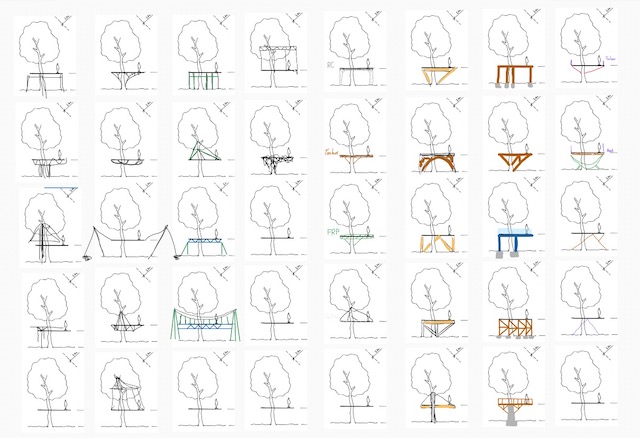Having ideas can be hard, especially when we already have a first idea. How do we trick our brain into thinking that we should go in search of another and another, when as far as our brain is concerned, the first one will do the job?
Here’s a technique I call ‘using your professional palette’. I taught it today in a workshop on conceptual design for engineers, but I think it works for other humans too. The method is to remove the mental block by quickly sketching out five different ways of solving the problem from our palette of standard approaches. The approach forces us to consider options that we might not even have noticed we have discounted.
In this grid 8 people have schemed five different ways of putting a platform in a tree. They all had an idea in mind before they started the exercise. But in five minutes most of them had generated many more.
One of the palettes that a structural engineer has is a range of structural forms. So the technique goes: what would this look like if I used a beam, or an arch, or a suspension structure in place of the existing form? Another palette is materials. So then we ask, what would the answer look like if we use steel, or concrete, or timber? etc.
Quick fire, don’t think about it too much. See what comes up that you hadn’t noticed before.
What you may notice is that the range of options depends on how much work you have done to build up your palette. The more ways of building you know about, the more ideas available to you. So we have to do the work, to create and update the palette. But then we can paint much richer pictures.

